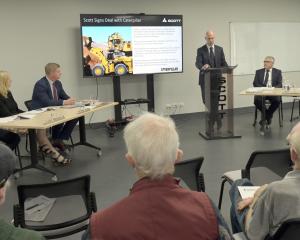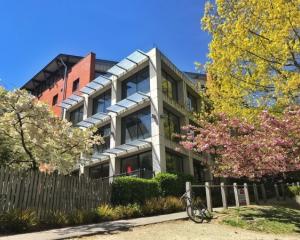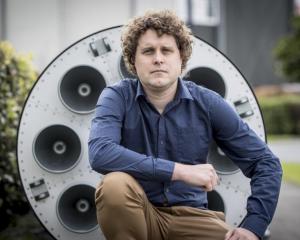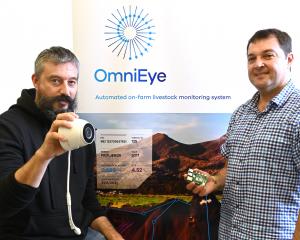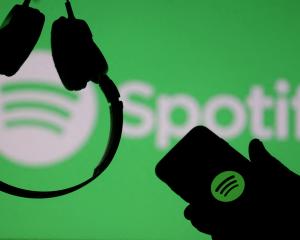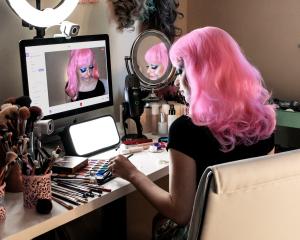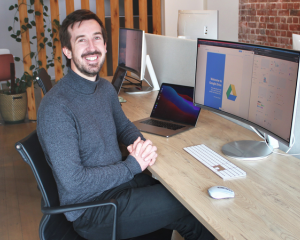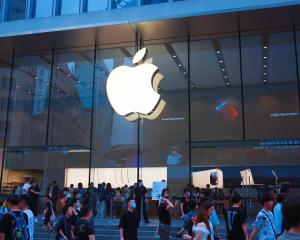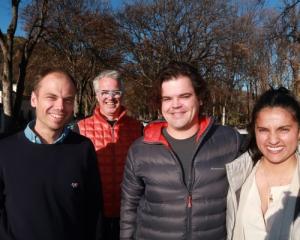
New apps on LinkedIn and Facebook allow you, at a glance, to see the patterns of connections between you and everyone you have a tie to in that network who has agreed to create a mutual connection.
Users will see a rich lattice of personal connections that, digitally illustrated, can resemble star clusters, multi-cell organisms or the airline route schedules in the back of in-flight magazines.
The apps show not only the connections between yourself and others, but also allow you to click on anyone in your network and see the mutual connections between people you know. It can be a fascinating and surprising experience to discover that while you know Rob in Boston and Frank who sits a few desks away at work, you had no idea they know each other.
Examining those nodes and clusters can show you how a spouse, close friend or a career mentor can literally be the crossroads of your life.
"They all tell a very interesting story," said DJ Patil, LinkedIn's chief scientist. "This is literally like snowflakes. There are no two of these alike."
LinkedIn, which launched its "InMaps" feature - which can be accessed at http://inmaps.linkedinlabs.com - late last month, uses colour coding to show at a glance the hubs of your professional network.
Patil said the network wanted the graphics to both be beautiful and have career utility, such as allowing professionals to visualise who to go to for career advice.
LinkedIn allows you to share your social graph through Twitter, Facebook or LinkedIn - with the names stripped out to preserve the privacy of those in your network.
"We're able to capture your entire professional life," Patil said. "That was a very empowering thing for people to talk about."
At the recent Strata data conference in Santa Clara, California, a long line of people were waiting at the LinkedIn booth to get their graph printed out. After Patil printed mine, I almost crashed my car several times driving back to the office because I kept peeking at my graph.
Mine looks like a double torus, with two different clusters of connection - one around current and former colleagues at work, the other around connections at my former employer in Connecticut.
What struck me was how separate my East Coast and West Coast worlds were. But by clicking on people within my graph, I discovered a surprise: A number of people from those two worlds actually know each other - a truly cool revelation.
On Facebook, you can find a similarly fascinating visualization app called "Social Graph." (Go to the home page of your profile, click on "Apps" on the left rail, and then search for "Social Graph" and install the free app.) Social Graph was developed by MIH Swat Labs, an research-and-development unit of the South African media company Naspers.
Jacques Van Niekerk, the chief technical officer with MIH Swat, said the app was intended as an experiment for a company's internal intranet network, but the developers liked it so much they decided to put the app up on Facebook.
One day, they saw a tenfold spike in users, causing them to scratch their heads until they discovered that the biggest celebrity in the social network world had installed their app.
"It never really attracted any attention, until Mark Zuckerberg used it," Van Niekerk said in an email message. "Once this happened, it gained a decent number of users. As I said - it was really only an experimental app."
The app doesn't have the colorful arcs of the LinkedIn maps, but it does have a startling quality: It instantly displays the face of each of your friends on a single screen. It almost has that wedding-day feeling of everybody you've ever known suddenly appearing together in one place.
"I find that the way in which the graph organises groups of people with dense connections together makes it easy to recognize natural groups," Van Niekerk said.
LinkedIn's data scientist Ali Imam kick started the programme internally. He built a prototype during one of the company's monthly "InDays," when employees can work on anything they want, from outside community service to hacking together some new software idea.
"We're not sure how it will be used - I think that's OK," Patil said. "One of things we're excited to do is just get this out there, and have (people) go from there."


